-
Posts
147 -
Joined
-
Last visited
-
Days Won
5
Content Type
Profiles
Forums
Downloads
Posts posted by Qbrick808
-
-
pandora's box!
..i just got home from work, i read most of the stuff in my email at work, but i'm too fried to respond in any crazy depth.
i'm still excluding Honus, Hank, and Babe. I guess one thing i could say is that I grew up learning baseball in the Tony La Russa era, meaning having as many movable parts as possible, playing for the big inning, and really using your entire roster situationally and trying to think of the most ideal scenarios possible. once the big inning happens, replace your big boppers with solid defenders, stuff like that. that's still how i go about thinking about baseball.
Isn't there a contradiction in there regarding Honus Wagner? You want movable parts, the big inning and situational use of the roster. In what way is Derek Jeter a movable part? He mans one position on defense and he plays pretty much one brand of ball at the plate. Wagner has everyone singing his praises that he would have been the best player in the league at any position other than pitcher, and he's a guy who led the league in power numbers as well as small ball stats multiple times. His ability to steal bases with only a 3% risk of getting caught allowed him to be crazy diverse right during the same inning on a regular basis.
Babe Ruth belongs on any list, but a big part of why he's considered the best player of all time is because of the fact that he could also pitch. Since you're not taking that into account, I can actually give you a pass there because it's clearly just a case of personal preference.
Hank Aaron was better than Barry Bonds hands down and really deserves the nod if there's a battle between those two.
But more than anything else discussed here, Honus Wagner is just a gimme. You said Hornsby gets a spot because he's the consensus best 2B of all time. Wagner is no less of a consensus pick as the top SS of all time. Did you read those quotes about him? I'm not a huge Bill James guy, but even if you disregard his, see what the players and managers had to say. The man had 8 Batting Titles, 5 RBI Titles and 4 SB Titles... he led in SLG 6 times and OBP 4 times; that's diversity. He was the best player of his age and Jeter has never even been voted the best player in the AL for a single season. The strangeness of the dead ball era actually makes Wagner stand out even more and only bolsters his case. He was doing things at a time when nobody was doing much of anything. If he's seen by so many as the best SS ever, the best National Leaguer ever, and perhaps the best or second best player ever outright, it's hard to buy any logic which favors Jeter over him, and even harder to understand him being absent from the entire roster.
-
I hate bringing up the whole steroids issue because so much is unknown about each individual player’s possible use and how effective it was for them, but the one guy who nobody really has any issue with pointing to the juice (nor should they) is Bonds. You can forget tests, forget court cases, forget anything provable in front of a judge; anyone who followed the story and understands what went down knows just about exactly what happened and when.
Given this storyline, and the exemplary way Hank Aaron conducted himself on and off the field, plus the fact that Hank doesn’t need to take a back seat to anybody as the all-time RBI King with 755 Home Runs and a .305 Batting Average, Aaron is the simple and obvious choice.
And with regards to the fact that Bonds could swipe bags, don’t forget that Aaron wasn’t too shabby as a runner either. He finished with 240 SBs but for the middle 10 years of his career he averaged more than 20 steals per season; plus, much like Jackie Robinson and Willie Mays, I don’t imagine Aaron was asked to run nearly as much as he could have… remember that Bonds came up as a string bean who was expected to steal bases.
But, onto the Bonds saga which shouldn’t be overlooked because it is undeniable:
Bonds was having a tremendous career on his way to a sure fire first ballot Hall of Fame induction from 1986 to 1998. During those 13 seasons he became the first 400/400 player with 411 HR and 445 SB. He hit for a solid .290 AVG with a great .411 OBP and a very strong .556 SLG. He was 34 years old and in all likelihood would have managed to get 55 more steals over perhaps another four seasons while adding another 100-150 homers, and would have created the 500/500 club anyway. I grant all of that; the guy was tremendous.
The problem is that from ages 35 through 42, he did stuff that Babe Ruth never sniffed just as his body got dramatically bigger and his hat size grew from a 6.5 to an 8. Are any of us so naïve to believe that this guy became the first ever to hit a sixth gear and prime after a prime upon reaching age 35? And no one should ever underestimate or ignore the timing of the catalyst which possessed him to reach beyond his natural gifts displayed over 14 MLB seasons plus his time at Arizona State.
After the strike of 1994 and an abbreviated 1995 season, things began to shift in 1996. Bonds had an historical season putting up 42 home runs, scoring 122 times, setting a new career high with 129 RBIs, and adding 40 steals to boot becoming just the third man to ever reach the 40/40 mark. Meanwhile, Brady Anderson knocked 50 dingers over the wall – despite never hitting half that many in any season before or after – and Mark McGwire led the majors with 52, his first time over 50 and his best total since his rookie campaign a decade earlier.
In 1997, Bonds was up to his usual business as he belted another 40 long balls – with 101 RBIs and 123 runs scored – while leading the Giants to the post-season for the first time since the earthquake World Series of 1989. However, at age 33 Mark McGwire seemed to find a fountain of youth by staying healthy for the first time since he played at that magic baseball age of 27. In 156 games split between Oakland and St. Louis, Big Mac set a personal best for the second straight year with 58 home runs.
1998 saw Barry Bonds remain Mr. Consistent as he hit 37 balls over the fence, drove in 122 and scored 120 times himself. Despite the continued excellence which allowed him to start a seventh consecutive All-Star Game in Left Field for the National League, things were not sitting well with the former Sun Devil as he looked around the landscape of his league. Sammy Sosa joined Babe Ruth and Roger Maris in the esteemed company of men to hit 60+ homers in a season by smacking out 66. Not ready to be outdone by the popular Chicago star, in St. Louis McGwire’s health again allowed him to play all but a handful of games, and for a third straight year he broke his own career mark while also setting the new single season record for MLB with 70 home runs.
Anyone who followed some of the outstanding journalistic reporting in the San Francisco Chronicle on this topic knows that this was when Bonds’ ego and anger really started to get the best of him. As great of a player as he was, his frustration with watching these other guys glorified – as they certainly were – was eating him up inside. Bonds was not envious of their success because he was any less talented; what bothered him was the fact that he knew all too well what was not a very guarded secret within the game. McGwire and others were using banned substances to enhance performance and increase durability while the league looked the other way simply hoping to continue its recovery from the strike that wiped out the World Series in 1994. It was at this point when Bonds began seriously looking into what was available on the black market which might allow him to elevate the level of his play beyond his already established standard of greatness.
1999 changed everything. McGwire sat out fewer than ten games for a fourth straight season while he and Sosa each blasted more than 60 home runs as if it was now something to be expected on an annual basis. As Bonds made his initial bid to compete with those guys according to their rules, he was not quite so fortunate. Lacking experience with the substances he began using, and no doubt eager to make a big splash as quickly as possible, Bonds blew out his elbow when the muscles grew too fast for the joint’s other elements to support it; he still managed to hit 34 homers but missed 60 games with the injury.
Looking towards his age 35 season, Barry Bonds had to understand that he was going to make some major changes happen pretty quickly, or he was going to miss out on what remained of his available window. During the rehabilitation of his elbow injury and the offseason, Bonds became more educated about the usage of steroids and human growth hormone. He surrounded himself with a small but select group of true experts on the way to use these enhancements. He entered play in 2000 with a bigger, stronger and more resilient body. Despite sitting out 19 games, Bonds set a new career record by hitting 49 home runs. Mark McGwire’s problems with injury returned in 2000 and he would never play 100 games in a season again. And while nobody returned to the 60 home run plateau that year, Sammy Sosa did manage to eke out Bonds by just one long ball to lead the majors with 50.
The anticipation for the 2001 schedule must have been something unimaginable by most for the 36-year-old Bonds. He was healthy, he had proven to himself that he could endure a full season while effectively managing the supplements he had added to his regiment, and he had to sense that the stage was set for him to break new ground. After an uneven April with 11 HR but just a .240 AVG, Bonds exploded in May hitting .369 with 17 HR and Slugging 1.036. By the All-Star Break, the HR watch was well underway; the bar had been raised to 70, but Bonds ended the first half with 39 HR, 73 RBIs and a .305 AVG while Slugging .826. The confidence gained from proving that he was just as capable of such feats on an even playing field propelled Bonds to even new heights after the break when he hit .355, slugged .908 and added 34 more home runs thus establishing the new and still current single season HR record of 73. He tied his career best by scoring 129 runs and set a slew of new personal records with 137 RBIs, 177 Walks, a .515 OBP and a SLG of .863. Between Pittsburgh and San Francisco, Bonds had won three NL MVP Awards in four years from 1990-1993. Now in 2001, he received the award for what would be the first of four consecutive seasons. He would never reach even 50 homers in a season again, although that can be attributed to the way he was pitched by opponents as he would be walked nearly 600 times over the next three seasons while still managing to hit 45+ HR in each of those years.
The problem with trying to overlook the steroid factor in this case is that the home run and walk numbers just became too outlandish to accept for a player who had passed his 35th birthday. For thirteen dominant seasons, Barry Bonds had paved his way to Cooperstown by hitting one home run for every 16 at bats, drawing one walk for every 5 at bats, striking out once for each 6.3 at bats, hitting for an Average of .290, earning an On-Base Percentage of .411 and a Slugging Percentage of .556. That was the Hall of Fame pace he was on through 1998.
Between 2000 and 2007, when Bonds’ age progressed from 35 to 42, the Giants’ leftfielder hit one home run for every 9 at bats, drew one walk for every 2.5 at bats, hit for an Average of .322, earned an On-Base Percentage of .517 and a Slugging Percentage of .724. Perhaps more telling than the fact he accomplished this at the advanced age which he did is that all of these massive improvements occurred while he actually struck out less often than before; one time for every 6.7 at bats.
There is no precedent for such an upward turn at such a late stage in a career, and when combined with what has been said by people close to the man, items which have been confiscated during federal raids, and the sheer change in the size of Bonds’ body – most particularly and significantly his cranium – there is little reason for anyone to maintain the pretense that this son of All-Star Bobby, godson to Hall of Famer Willie Mays, and cousin of Hall of Famer Reggie Jackson did not make use of banned and illegal substances in the final third of his major league career.
Without that late surge, he'd still be a great and in the Hall, but he wouldn't be mentioned on the level with the elites of the elite like Mays, Aaron, Musial, et al.
-
I don't think there is tremendous disagreement on Maddux. It is hard to argue with his success, and I certainly would not, but it is also easy to acknowledge the several other pitchers who could easily and rightfully fill his slot.
Bonds is a special case deserving of a separate post which will follow this one.
The real issue is Honus Wagner, and I should preface my remarks by saying that the only team I've ever had any passion for in sports plays in the Bronx. My dad and grandfather took me to my first game when I was 5 years old and I've been to several playoff and World Series games starting in the late 1970s; I certainly have nothing against Jeter in any way.
It is true that there is difficulty in measuring a player from Wagner's era to a player from today. Based upon pure stats, it's a clear runaway for Wagner, but the game has definitely changed. The one spot where Jeter has a clear edge is Home Runs (249 to 101) and that's probably the most significant place to point out how the game is different. Wagner has healthy leads in AVG (.328 to .313), RBIs (1733 to 1234), Triples (252 to 65) and Stolen Bases (723 to 346). The margin in triples and RBIs more than makes up for the lead Jeter holds in HR.
Wagner was a ridiculously better basestealer. Not only does he have more than double the number of steals, but he basically never got caught. Jeter's success rate when stealing is good at 79%, but Wagner's success rate when attempting to steal a bag was 97%!
Another big spot where the ratio shines brightly is with strikeouts and walks. Jeter's BB/K ratio is almost 60%, so he's striking out a bunch more than he is earning a free pass. Wagner's BB/K ratio was 131% which means he walked quite a bit more than he struck out.
But finally, the best way to try and compare great players from different eras is to match them up against their respective contemporaries.
In 17 seasons, Derek Jeter has led the league in Hits 1 time and in Runs Scored 1 time.
In 18 seasons with Pittsburgh (I'm only using data from 1900 forward), Honus Wagner led the league as follows:
8 Batting Titles
7 times led in Doubles
6 times led in Slugging Percentage
5 times led in Runs Batted In
4 times led in Stolen Bases
4 times led in On-Base Percentage
3 times led in Triples
2 times led in Runs Scored
2 times led in Hits
They are obviously both Hall of Famers, but Wagner was one of the select five honored in the very first class of 1936; at the very least, that says he's a Top 5 all-time player through that point. They are both great, but Jeter has never been anywhere near the dominant player that Honus Wagner was. Wagner was considered the best baseball player of his generation; I don't think Jeter would qualify for that kind of conversation by anyone including his family. Many believe Wagner to be the best player in the history of the National League.
Some quotes about Honus Wagner by baseball people:
Christy Mathewson ---- "Wagner was the only player that did not have a weakness. The only way to keep Wagner from hitting was to not pitch to him."
Babe Ruth ---- "At shortstop there is only one candidate, the immortal Honus Wagner. He was just head and shoulders above anyone else in that position. Fellows like Marion, Bancroft, Peck and Billy Jurges were all great fielders. But Honus could more than out-field all of them. He was perhaps the greatest right-handed hitter of all time. He had remarkably long arms, hams for hands, and just drew the ball to him. Ed Barrow once told me he could have been as good in any position but he made his greatest name as shortstop. He led the National League eight times at bat and he was always up with the leaders when he was in his forties."
Sam Crawford ---- "In my opinion, the greatest all-around player who ever lived was Honus Wagner. Ty Cobb could only play the outfield, and even there his arm wasn't anything special. Honus Wagner could play any position. He could do everything. In fact, when I first played against him he was an outfielder, and then he became a third baseman, and later the greatest shortstop of them all. Honus could play any position except pitcher and be easily the best in the league at it. He was a wonderful fielder, terrific arm, very quick, all over the place grabbing sure hits and turning them into outs. And, of course, you know he led the league in batting eight times."
John McGraw ---- "He was the nearest thing to a perfect player no matter where his manager chose to play him. He is not only a marvelous mechanical player, but he has the quickest baseball brain I have ever observed."
John McGraw ---- "I name Wagner first on my list, not only because he was a great batting champion and base-runner, and also baseball's foremost shortstop - but because Honus could have been first at any other position, with the possible exception of pitcher. In all my career, I never saw such a versatile player."
Bill James ---- "Wagner's 1908 season is the greatest single season for any player in baseball history. The league ERA of 2.35 was the lowest of the dead ball era and about half of the ERAs of modern baseball. Wagner hit .354 with 109 RBI in an environment when half as many runs were scored as today. If you had a Gold Glove shortstop, like Wagner, who drove in 218 runs, what would he be worth?"
Bill James ---- "Honus Wagner is the second best player of all time after Babe Ruth and easily the greatest shortstop of all time. The difference between Wagner and the second greatest shortstop is roughly the same as the gulf between the second greatest shortstop and the 20th greatest shortstop."
Regarding the bench and backups and A-Rod's ability to play both SS and 3B, don't forget that Pete Rose can back up at 1B, 2B, 3B and in the OF while Albert Pujols can cover 1B, 3B and the OF.
-
he played the outfield, had to stick him somewhere, i imagine someone of his caliber can play center field, and there's no way i'm letting arguably the best hitter to ever live not be in the starting lineup.
It's not really much of a big deal either way, but consider the following:
-- Ted Williams never played CF for even one third of an inn (though he did pitch 2 inn to close out a 12-1 loss in gm 1 of a 1940 double-dip).
-- Stan Musial DID start over 300 games in CF (about 1 out of every 6 of his OF starts).
-- Barry Bonds DID start over 150 games in CF and is often said to have been the best superstar CF to ever be a regular LF (although that statement is much more accurate when discussing his earlier years as he was faster and slimmer before he got all bulked up).
Statistically, Williams was the worst LF of the three ranking third in Fielding Percentage, Putouts per Chance and Errors per Chance. Williams was also significantly worse when in RF than in Left, so clearly he was the least versatile defensively; given those facts, you probably wouldn't want him listed in CF where he never played and would be the least likely of these three to succeed.
Musial was a far superior CF to Bonds based upon Fielding Percentage, Putouts per Chance and Errors per Chance. Despite having a breakdown in OF starts of about half in LF, 1/3 in RF and 1/6 in CF, Musial was at his best while in Center. He won the MVP Award three times, and in none of those years was his primary position LF (in fact, he won it in 1948 when he started more games in CF than any other spot). It was only Musial's tremendous versatility which kept him out of CF full time.
Despite the fact that Williams was much worse when in RF, he did start there 168 times compared to zero for Bonds.
Therefore, if there is a need to juggle positions a bit in order for things to fit with these Outfielders, the only logical choice would have to be:
-- LF - Barry Bonds
-- CF - Stan Musial
-- RF - Ted Williams
Personally, I'd throw Bonds to the bench, put Teddy where he belongs in LF, keep Stan in RF and start Willie Mays in CF.
Actually, now that I really think about it, why is Bonds on this list at all at the expense of Hammerin' Hank? Because of 7 extra homers which nobody believes are legit? How is the all-time RBI King, who had a better Average than Bonds, had more Hits, Runs Scored and Triples, and was a hell of an outfielder who could play all three spots, completely absent here? I realize that many would rather see Pete Rose go before Bonds, but I too am a Rose supporter, so given that Hank Aaron has to get a spot somewhere (must have been an oversight), that would mean kicking either Bonds or A-Rod to the curb.
Just imagine building a team, and considering everything from on the field to inside the clubhouse to ugly controversy with the press... would you take Alex Rodriguez, Barry Bonds or Hank Aaron? The question is so ridiculous it's practically rhetorical.
**ALSO - I realize this wasn't meant for a debate, but there is another pretty glaring omission on this list.
I love Jeter, and he's certainly had the best all around career of any modern SS, but look at the numbers and you'll see that Honus Wagner blows him right out of the water. He should be starting over him and he's not even on the bench. If a guy like Rogers Hornsby can be on this list, then Honus Wagner absolutely must be there as well.
Start Wagner at SS, move Jeter to the bench and dump A-Rod from the squad.
Platoon Musial and Aaron in RF, start Mays in CF with Williams in Left, and send Bonds packing as well.
ONE MORE -- Greg Maddux is just not a Top 5 all-time SP (not Top 10). Many could be argued, but some who surely belong ahead of him include:
-- Christy Mathewson
-- Walter Johnson
-- Tom Seaver
-- Pedro Martinez
Others who are right there worthy of a coin flip include:
-- Warren Spahn
-- Steve Carlton
-- Curt Schilling
-- Juan Marichal
-
Can't help you with your specific question, but thought I'd mention that I've been working on the same exact Mod Concept for the past several months and am nearing a release.
Not sure if we'd be better off working and finishing together to end up with the best possible product, or if having two of these out there would be worthwhile.
-

This would be Pretty Cool Someone could insert into the files.
Thanks

Already well in the works... not to worry.
-
this may be the issue i was running into earlier.. try the decompressor first. it should make a file around 98,000 kb or so. then give the modtool another shot. im in th middle of working on it now

We were thinking along the same lines. I eventually went and got the NBA 2K12 Decompressor, used that, and then was able to load the global file into the Mod Tool.
Thanks for the suggestion as it was the right thing to do regardless.
Probably need an updated version of the Mod Tool to avoid the need for this completely, but it's definitely a workable situation now.
-
Anyone know why I'm having trouble opening the global.iff file in the Mod Tool?
I'm using version 0.198 and I seem to be able to open all of the other iffs I've tried except for the global.
The file size of global.iff is 43,890 KB. As soon as I attempt to open it, global.iff.temp is automatically created, but as soon as that reaches a size of 19,440 KB, it stays right there. I've tried several times and definitely given it enough time to say that it's not a matter of me just needing to wait a little longer. I even re-booted and tried to do it with a clean fresh start, but I got the same result.
Global.iff was never a problem to view in the Mod Tool in the past.
Any thoughts, please?
-
Anyone else noticing that the CPU pitchers are taking very little time between pitches during an at-bat?
There have been many instances in just this first day of playing where I wasn’t able to get to the menus via the D-Pad before the pitcher was already in his motion (meaning I couldn’t pinch-hit or pinch-run when I was intending to). This also has an effect on base runners taking a lead and getting that button held down in time when you intend to steal.
I suppose it's something which will be somewhat easily adjusted to (like by getting to the menu screen in a hurry before you should really need to), but it’s definitely weird and has even caught me a few times when I was conscious of it and anticipating the need to press the D-Pad button earlier and faster than what I’ve become used to.
-
I did the Amazon Pre-Order deal with Release-Day Delivery so I saved my 3 pennies and have been sitting here patiently waiting (well, not really) for the UPS truck to come for the past 8 hours (I actually took off work today and tomorrow to be able to get a good start with this new toy).
The tracking site confirms that my package is on a truck and out for delivery, but they say deliveries can come as late as 7pm ET, so I’m now down to the final 4 hours of that window… of course the doorbell could ring at any moment, so the anticipation is building.
The most shocking thing to me was that the option for guaranteed delivery right on March 6th was a mere $0.99, while the one-day overnight delivery method would have cost an extra $10.
Imagine saving $9 just to get the thing one day earlier!
-
you save 3.00 dollers, not cents. i it for 26.99 at amozon.
You save $3 from Amazon if you download a digital only copy.
I'm pretty sure the reference above was to the $0.03 you save if you order a physical disc for delivery via mail.
-
I'm just fuming because initially it looks clearly like the engine has not been tweaked at all. That really irks me, especially considering the issues with it last year.
Yeah, I can certainly understand that. It seems pretty clear that the focus for changes leading into the 2K12 version was on a lot of elements that did not include Franchise Mode (at least not in any fundamental ways). This will of course make some people angry while satisfying others, but given that Franchise is the most involved way to connect with the game, you'd think they'd realize that a large core considers that mode a top priority.
It could be that the developers are so in love with their new MLB Today concept that they felt many people might gravitate towards that and away from the Franchise Mode (and they likely didn't have the ability to create the new mode they're introducing AND devote enough time to rebuild the basic underlying model which drives the Franchise Mode).
-
The bad news:
Some of the most glaring issues were HR totals and Batting Average. You can see in the images that they are the same as last year. Only about 5-10 player hit above .300 while IRL there's generally 20-30. HR totals are still low topping out at 37, when there's usually a few outliers at 50+ and generally 3-4 at 40 HR's IRL. Not so this year in 2K12 *smh*
The worse news:
Despite the sim engine being dreadful last year, you could expect realistic results in franchise. Meaning the pirates weren't going to win the world series unless they really built a team. From the results at PastaPadre even this has been screwed in 2K12. As you can see ... Washington make a playoff run. The nationals won 93 games, just so we're clear. More than boston and new york.
While I would agree that your observations are obviously not a good sign, it may not be as dramatic as your first impression.
In the last four seasons, only one time has a major leaguer reached 50 Home Runs, so we shouldn’t be expecting that to happen regularly. Ten others did reach 40 over that span, but even that’s still less than three per year so it’s not such a glaring deviation.
The better Batting Averages are clearly off, but keep in mind that many of the real .300 hitters are barely clearing that hurdle. Just short of half the players who hit over .300 during the last four years did not get past .310, and the number of guys who hit between .290 and .300 is just a few shy of the amount who were over .300 but not .310. If you adjust that range of player and widen it to include those who bat between .290 and .310, rather than just focusing on the .300 mark so specifically, things balance out a lot more neatly.
Also, don’t consider the Nationals making a playoff run as such a joke. Winning more games than both Boston and the Yankees may be a bit of a stretch, but Washington has improved a lot in recent years and they have actually put together a very solid team with strong corner men in and out, a solid backstop, and a truly elite back of the bullpen combination (add a CF and one more pitcher, which they’re working on right now, and they should definitely be in the playoff hunt all season... and no, I do not root for the Nats or live in/near DC).
The overall point… it may be a fact that there is a discrepancy in several areas, but I don’t know that it’s such a significant gap from the reality to be considered any sort of disaster.
-
-
Jayson Stark
ESPN.com
With a negotiating deadline just days away, it now appears "likely" that Major League Baseball and the players' association will reach an agreement to expand the playoffs to 10 teams starting this season, sources familiar with the discussions have told ESPN.com.
According to the terms of baseball's new labor deal, the two sides are required to reach an agreement before Thursday or postpone playoff expansion until 2013. However, discussions to resolve numerous scheduling issues have "intensified" in recent days, said one source.
Multiple sources have declined to reveal any details of the talks, but the sides have made enough progress that one source said, "The feeling is now that it's likely that something is going to get done."
Despite commissioner Bud Selig's unabashed push for expanding the playoff field this year, baseball's schedule-makers have been hung up for weeks about how to make expansion work for this season.
With the regular-season schedule already in place, they are faced with the challenge of trying to squeeze two one-game, wild-card playoffs, the Division Series and the League Championship Series -- along with potential tiebreaker games and weather postponements -- into a tight three-week window between the end of the season Oct. 3 and the start of the World Series on Oct. 24.
Those issues will not be a problem in 2013, when the regular-season schedule can be set up to accommodate the larger postseason field. The difficulty with implementing it this year was that negotiations did not begin until after the regular-season schedule already had been finalized.
Under the terms of the labor agreement, there would be two wild-card teams in each league instead of one. And, in order to place more value on finishing first, the two wild cards would play each other right after the season in a one-game, win-or-go-home game. The winner then would advance to play in the Division Series.
As recently as last week, sources were suggesting the two sides hadn't been able to agree on any acceptable postseason-schedule format. However, the increased pace of the discussions since then are a sign that a solution is in sight.
The biggest problem the scheduling experts have faced is trying to fit the best-of-five Division Series into just a six-day window, so the League Championship Series can begin Saturday, Oct. 13. That would mean eliminating at least one travel day in the Division Series, a development that could lead to major travel and game-time issues.
One source said the two sides are still talking because the deal is still "not done," and not all details have been ironed out. But sources are expressing optimism that all of the remaining obstacles can be overcome in time to implement the new playoff format for this year.
-
I was wondering if any of you have had experience with various brands of Xbox 360 type game controllers for the PC.
I had been using the Logitech F510 Rumble Gamepad for a while, and what Iâm about to describe was never an issue with that.
Currently I am enjoying the wireless freedom of a Microsoft Xbox 360 Controller for Windows.
However, I have noticed that the analog sticks on this Microsoft model seem to be significantly less consistent or stable when it comes to the precision of pitching in MLB 2K.
Iâm curious if anyone can confirm or comment on whether the different models have differing reputations for subtle issues such as this (or perhaps the specific unit I got could be slightly defective).
I went through the calibration process several times and I even tried to compensate for the way the right stick seems to lean on the pitch gesture display, but those attempts were not successful enough to make things right given the strict accuracy required for the pitching motion in this particular game.
Iâm attaching an image of a few screenshots of the Pitch Analyzer. These are examples of pitches that I absolutely know I threw perfectly straight, yet as you can see, the upward motion consistently leans to the right. There have even been instances when while throwing a simple fastball I have been charged with a wild pitch because the stick moved just outside of the allowed region (not really, but the computer is interpreting it that way).
So, does anyone know if the Microsoft Xbox 360 controllers for Windows are known to have less stability with the analog stick up/down motion than other brands? Is there perhaps some way to fix or adjust this (through the Windows calibration process or otherwise) that Iâm just not aware of?
Any thoughts, suggestions or ideas?
I still have a period of time where I can exchange or return this Microsoft controller, but I really prefer every other aspect of its design over the Logitech models (including their wireless F710), so Iâm hoping someone can help me make this one work the way I need it to (or at least confirm that it simply cannot).
Thanks for any info on the subject.
-
Some additional images show that it is more than just the pitch rating number which will be visually affected by the change to pitching in 2K12. The entire circle where the stick motion of the pitch is shown will vary from green to yellow to red.
Also, take a look at an image of a new chart feature (called up anytime using the left button on the D-Pad) which displays how your pitcher is mixing locations with his pitches within the current game.
OTHER INFO WHICH MANY WILL FIND INTERESTING:
Warnings and ejections by the umpires have been added to MLB 2K12 for hitting batters. Umpires will issue warnings to each dugout just like in MLB, and anyone who hits a batter after the warning has been issued will be ejected from the game.
There will NOT be access to check if pitchers in the bullpen are warmed up (in the past you could use the pause menu or the D-pad). When a pitcher is fully warmed up, the game will notify you automatically (I'm not so sure about the point of this since real-world managers can have unlimited contact with their bullpen coaches, but I really don't see this being a huge factor anyway).
The overuse of a pitch leading to ineffectiveness within the current game will start out as a function of the pitcher's tendency; the success or failure by the opposition will only come into play later and possibly only when it's quite significant. This means that a pitcher who is expected to throw 65% fastballs will not get those yellow warnings and red scares just because he's using the heater two-thirds of the time, and Mariano Rivera will not be penalized for using his Cutter 87% of the time. It seems that the yellow indication in a pitch circle is the game's way of giving you a head's up that your current pace with that pitch is more than just a little above the tendency percentage found in the pitcher's profile. The yellow indicator does not mean that you will be penalized; it is simply letting you know that you're headed towards the red if you don't adjust. If you do adjust to the new color coded system, your red pitches will fall back to yellow and then green, and pitches which only got to the yellow can return to green quite quickly.
-
SUGGESTIONS AND IDEAS WHERE FEASABLE:
For the Batter’s Eye Rating, factor in Pitches Seen per AB, Balls/Strikes seen ratio and the Plate Discipline stats from fangraphs. The Plate Discipline section includes the following:
- O-Swing%: Percentage of pitches a batter swings at outside the strike zone.
- Z-Swing%: Percentage of pitches a batter swings at inside the strike zone.
- Swing%: Overall percentage of pitches a batter swings at.
- O-Contact%: Percentage of pitches a batter makes contact with outside the strike zone when swinging the bat.
- Z-Contact%: Percentage of pitches a batter makes contact with inside the strike zone when swinging the bat.
- Contact%: Overall percentage of a batter makes contact with when swinging the bat.
- Zone%: Overall percentage of pitches a batter sees inside the strike zone.
- F-Strike% – Percentage of first pitch strikes.
- SwStr%: Percentage of total pitches a batter swings and misses on.
For the Bunting and Drag Bunting categories, look to fangraphs More Batted Ball section where they indicate how many Bunts and Bunt Hits a player had. Between that and Sac Bunts (SH), you might be able to come up with a formula factoring in success rate as well as frequency of attempts. Just to show how pronounced this can be, over the last ten seasons Juan Pierre has averaged 13 Sac Bunts, 20 Bunt Hits and 57 Bunts per season. During that same decade, Albert Pujols has a grand total of zero Sac Bunts, 2 Bunt Hits and 4 Bunts. Clearly, frequency needs to play a key role in these figures because guys who can’t bunt won’t be allowed to do so at a high rate like Juan Pierre, yet a guy like Pujols could be a great bunter, but he is simply not asked to use that skill very often. Then take a guy in the middle like Derek Jeter; during the same decade, his averages per season are 7 Sac Bunts, 4 Bunt Hits and 11 Bunts.
The Awareness category for base running is certainly difficult. The Speed Score (spd at fangraphs) takes into consideration Stolen Base Percentage, Frequency of Stolen Base Attempts, Percentage of Triples and Runs Scored Percentage. I think another number which would provide at least a little bit of relevant info if included with additional data would be Runs Scored minus Home Runs.
Fielding Range can make use of the Range Factor stat (RF). The equation is:
((Putouts + Assists) * 9) / Defensive Innings Played
For Catchers Blocking Pitches, you could determine the average number of Passed Balls throughout MLB per 9 innings caught, and compare the individual catcher’s number of Passed Balls to that with a bell curve scale running plus to minus.
Catchers’ Game Calling brings up a very controversial choice for you to make. The only real way to use the stats is to base everything on the performance of the pitchers while the given catcher is in the game. Of course, many people will argue that a catcher who is mediocre at game calling will have an extremely inaccurate rating if his pitching staff is full of elite arms.
For Pitchers’ Control per each pitch type, fangraphs identifies the percentage of strikes in parenthesis, so looking at Roy Oswalt’s 2011 numbers, he threw 10.5% Sliders, 84.2% of which were strikes, and he used the Curveball 9.8% of the time with 70.8% of those pitches going for strikes, so coming up with a formula there shouldn't be extremely difficult.
Pitchers’ Movement is much more difficult to evaluate from raw numbers, but one thing to consider using is the simple percentage of attempted swings which are missed by the hitters (SwStr%). You might also factor in the percentage of pitches in the strike zone which are not swung at.
For Pitching Composure, batters Left on Base is certainly one good stat to include in a formula. A vital component in this category – for relievers – is the percentage of Inherited Runs allowed (IR). You could also consider including performance during Late Inning Pressure Situations for this one.
If Pitching Stamina is to be truly accurate, you’d want to try and include a representation of the pitch count beyond a certain threshold (say, over 70 or 75 pitches) in games deemed close (likely three or fewer run margins).
For Pitchers’ Pickoffs, in addition to the singular stat itself, you could include Stolen Base attempts against per 9 innings. Additionally, although it might be a little complex, you’d really want to include a base value of the catcher’s ability to throw out base stealers so to offset exaggerated figures attributable to runners taking advantage of a catcher’s liability as opposed to that of the pitcher.
Fangraphs actually has a stat called Clutch, so that might be a good place to start there (it measures a player’s performance in high pressure situations to that same player’s overall performance). You could also make use of the Close and Late/Late Inning Pressure Situation stats.
- O-Swing%: Percentage of pitches a batter swings at outside the strike zone.
-
-
Im going to try and see if i can get 2k12 and not sure after this year where the modding community will stand since this is supposedly 2ks last year.
Hey Don--
Something worth pointing out which I read about the future of 2K and MLB.
It's true that their exclusivity contract with the league expires after 2012 and they're not expected to have interest in renewing it unless the cost were to drop radically, but the most likely scenario is that no one else will jump in to grab that exclusive rights deal for the same reasons 2K is lacking interest.
What you will probably see beginning in 2013 is a situation where no single entity owns an exclusive MLB rights package and therefore many companies, including 2K, will be able to produce baseball games the right way.
Remember that the 2K exec who claimed they're not in the business to lose money (and that deal supposedly results in about a $40 million annual loss) never said anything about wanting to get out of the baseball game business. If no exclusivity deal is reached between MLB and some other party for 2013 (which is the best bet for where we're headed), there is absolutely no way that 2K will simply drop their baseball division; they have always expressed the desire to avoid becoming a basketball only operation (which is smart).
We will have to see how things break, but don't be too quick to assume that 2012 is the end for MLB 2K and baseball on the PC.



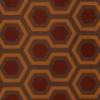
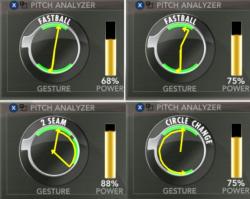

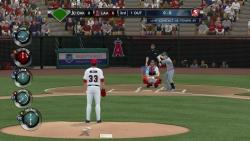
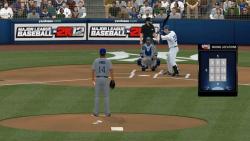
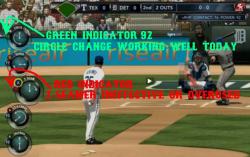
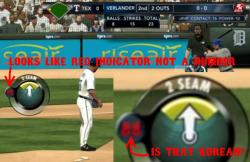
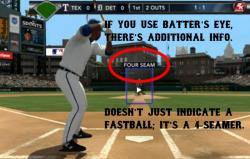
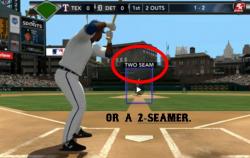
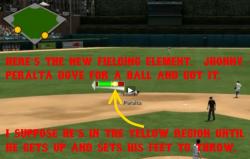
Kirby Puckett And The Rest Of Hall Of Famers
in Mod Requests
Posted · Edited by Qbrick808
But... it's all just opinion :drinks: